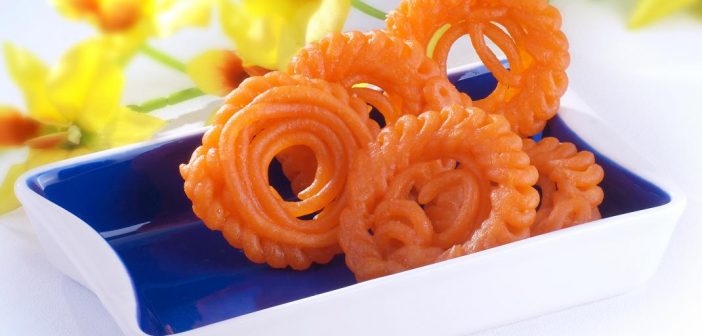Imrati, a jewel-toned sweet with a deceptively simple appearance, boasts a rich history and cultural significance deeply woven into the fabric of India. This coiled confection, dipped in a sugary syrup, transcends mere dessert; it’s a symbol of celebration, a testament to culinary ingenuity, and a window into India’s vibrant food traditions.
Origins Shrouded in Time
The exact origin of Imrati remains shrouded in the mists of time. References to similar sweets appear in ancient Indian scriptures and historical texts, suggesting its presence in royal feasts and celebratory occasions for centuries. Some believe it originated in the Mughal kitchens, perhaps named after Prince Salim, who later became Emperor Jehangir (also known as Jahangir). Others trace its roots further back, to pre-Mughal India, where skilled cooks experimented with fermented flours and sugar syrups. Regardless of its precise origin, Imrati has undoubtedly enjoyed a long and illustrious journey through Indian culinary history.
A Celebration of Texture and Taste
The essence of Imrati lies in its unique texture and taste. Made from a base of urad dal (black gram) flour, the batter undergoes a crucial fermentation process. This fermentation not only adds a subtle tang but also contributes to the signature light and airy texture. The batter is then piped into intricate, concentric circles, creating a mesmerizing, web-like design. Deep-fried in hot oil, the Imrati puffs up, acquiring a golden-brown hue. Finally, it’s immersed in a warm, sugar syrup flavored with saffron, cardamom, and sometimes even rosewater. The result is a symphony of textures – the crisp exterior yielding to a soft, almost spongy interior – all bathed in a sweet, fragrant syrup.
Popularity Across the Subcontinent
Imrati transcends regional boundaries, cherished throughout India and beyond. While the name remains ubiquitous, regional variations abound. In some parts of India, it’s known as Amriti, Jhangri, or Emarti. The base batter might be tweaked, with the addition of yogurt or semolina flour for a slightly different texture. The size and shape can also vary, with some regions favoring smaller, bite-sized Imratis, while others prefer larger, more elaborate ones.
Beyond the Sweet: Symbolism and Significance
Imrati’s significance extends far beyond its delightful taste. Its presence on a plate signifies auspicious occasions. It’s a staple at weddings, gracing the ceremonial thali (platter) and symbolizing sweetness and prosperity for the newlyweds. During festivals like Diwali, Ganesh Chaturthi, and Holi, Imrati adds a touch of festive cheer to the celebrations. It’s also offered as a sweet prasad (offering) in temples, signifying gratitude and devotion.
A Testament to Culinary Skill
The preparation of Imrati is an art form in itself. Achieving the perfect consistency of the batter, the intricate piping technique, and the precise frying process all require a skilled hand and years of experience. Traditionally, Imrati-making was a closely guarded family secret, passed down through generations. Today, while readily available in sweet shops across India, the art of crafting the perfect Imrati continues to be cherished by skilled sweet-makers.
Modern Variations and Experimentation
Imrati, like many Indian sweets, is not immune to modern-day culinary innovation. While the traditional recipe remains a cornerstone, some chefs are experimenting with new flavors. Variations with flavored syrups, like rose or kewra (pandan), or the addition of chopped nuts for a textural contrast are gaining popularity. Additionally, smaller, bite-sized Imratis dipped in chocolate or coated with edible glitter cater to contemporary preferences.
A Sweet Legacy
Imrati, with its golden coils and intricate design, is a testament to India’s rich culinary heritage. It’s a sweet that transcends taste, symbolizing celebration, devotion, and the enduring legacy of Indian culinary traditions. From ancient royal kitchens to modern sweet shops, Imrati continues to delight palates and embody the essence of Indian festivity. The next time you savor this golden confection, take a moment to appreciate the history, skill, and cultural significance that lie hidden within each bite.





